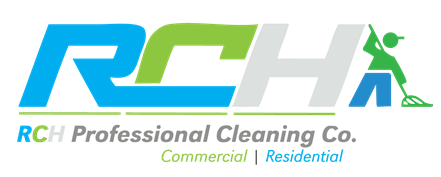Autumn in the Ozarks is a spectacular display of nature’s palette, with the rolling hills around Springfield, MO transforming into a vivid tapestry of reds, oranges, and yellows.
For many residents, this signals a time of warm apple cider, pumpkin patches, and cozy sweaters. However, for homeowners, the fall season also brings about the perennial debate: to rake or not to rake the leaves that inevitably blanket our yards.
We here at RCH Cleaning understand that this question is about more than just lawn aesthetics or the urge to engage in fall traditions.
There are pros and cons to consider—and while this may not count as a ‘typical’ housecleaning topic, the decision can impact not only the health of your lawn, but also the local ecosystem.
So let’s take a moment to talk about it.
The Case for Raking
Raking has been a fall tradition for generations, with some very practical reasons behind it.
A thick layer of leaves can smother the grass beneath, depriving it of crucial sunlight and air. This can lead to patches of dead grass come springtime.
Moreover, wet leaves can harbor fungi and diseases that can be detrimental to both your lawn and the plants that make your garden vibrant.
From a safety standpoint, leaves can be quite slippery when wet, posing a hazard on walkways and driveways.
For those who take pride in a well-manicured lawn or have safety concerns, raking might be the best choice.
The Case Against Raking
On the flip side, leaving the leaves where they fall can be beneficial.
A light layer of leaves can provide insulation for your lawn, protecting it against the chill as temperatures drop.
These leaves eventually break down, adding valuable nutrients to the soil, which promotes a healthier lawn or garden in the long run.
Moreover, leaves are an important part of the ecosystem, providing habitat for numerous creatures such as butterflies and moths, which lay their eggs in the fallen leaves.
By raking, we disrupt this cycle, which can have ripple effects on biodiversity.
Finding the Balance
So, what’s the right choice? Well, it can be a bit of both.
You could, for example, consider mulching instead of raking.
Mulching mowers can chop the leaves into fine pieces that will decompose more easily, offering a middle ground. This allows nutrients to return to the soil without smothering your lawn.
With that being said, if you do decide to rake, here are some tips to do it efficiently:
- Wait for a dry day, as wet leaves are heavier and more difficult to gather.
- Use a lightweight rake to avoid fatigue.
- Rake leaves into small piles onto a tarp — this makes it easier to transport them to a compost pile or green waste bin.
- Don’t forget to wear gloves to prevent blisters.
Conclusion
At the end of the day, deciding whether to rake your leaves in the Ozarks this fall is a practical decision that boils down to personal preference and lawn care philosophy.
Raking can promote a tidy and healthy yard, free of potential fungal growth and safety hazards. Leaving leaves undisturbed, however, can benefit the local ecosystem and reduce your workload.
In the end, it’s about choosing what’s best for you and your lawn.
Mulching presents a compromise, helping to enrich your soil without the effort of raking.
No matter your decision, the most important thing is that it works for you and allows you to enjoy the beauty of the season with a little less worry about the chores it brings.
And either way, if leaves get tracked into your house routinely and you struggle to keep things clean, give us a call at RCH and we’ll be glad to remove the leaves from the inside of your home!

